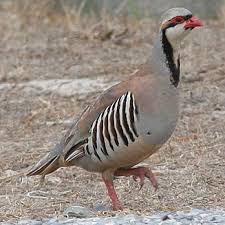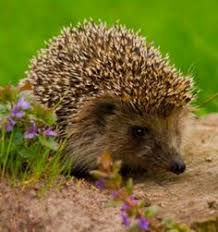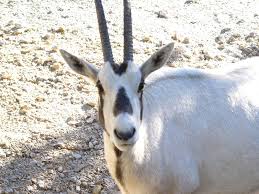Showing posts with label Oman. Show all posts
Showing posts with label Oman. Show all posts
Sunday, 28 January 2024
Thursday, 5 October 2017
SULTANATE of OMAN
Another Birds cover from Oman, depicting a miniature sheet issued in 2016 with the "pharaoh eagle-owl" (Bubo Ascalaphus). This bird is native of northern Africa and the Arabian peninsuala, including of course the Sultanate of Oman. Its habitat is mostly open arid country with rocky outcrops, plains, wadis and cliffs.


Sunday, 1 October 2017
SULTANATE of OMAN
A beautiful cover from Oman, depicting a miniature sheet issued in 2016 with two birds species: the Egyptian vulture (Neophron Pecnopterus) on the left and the Chukar partridge (Alectoris Chukar) on the right.


Wednesday, 13 September 2017
SULTANATE of OMAN
Another beautiful UNESCO cover from Oman, depicting a miniature sheet issued in 2015 celebrating the World Water Day and showing The Falaj Al-Khatmeen.
The Afflaj (plural of Falaj) or irrigation systems of Oman, are inscribed on Unesco World Heritage sites since 2006.
The property includes five afflaj irrigation systems (as the one represented in this miniature sheet) and is representative of some 3.000 such systems still in use in Oman. The origins of this system of irrigation may date back to 500 a.d., but archaeological evidence suggests that irrigation systems existed in this extremely arid area as early as 2500 b.d. Using gravity, water is channeled from underground sources or springs to support agriculture and domestic use. The afflaj represente an exceptionally well-preserved form of land use.

The Afflaj (plural of Falaj) or irrigation systems of Oman, are inscribed on Unesco World Heritage sites since 2006.
The property includes five afflaj irrigation systems (as the one represented in this miniature sheet) and is representative of some 3.000 such systems still in use in Oman. The origins of this system of irrigation may date back to 500 a.d., but archaeological evidence suggests that irrigation systems existed in this extremely arid area as early as 2500 b.d. Using gravity, water is channeled from underground sources or springs to support agriculture and domestic use. The afflaj represente an exceptionally well-preserved form of land use.
SULTANATE of OMAN
A beautiful UNESCO cover from Oman, depicting a miniature sheet issued in 2015 celebrating the World Water Day and showing The Falaj Dares.
The Afflaj (plural of Falaj) or irrigation systems of Oman, are inscribed on Unesco World Heritage sites since 2006.
The property includes five afflaj irrigation systems (as the one represented in this miniature sheet) and is representative of some 3.000 such systems still in use in Oman. The origins of this system of irrigation may date back to 500 a.d., but archaeological evidence suggests that irrigation systems existed in this extremely arid area as early as 2500 b.d. Using gravity, water is channeled from underground sources or springs to support agriculture and domestic use. The afflaj represente an exceptionally well-preserved form of land use.

The Afflaj (plural of Falaj) or irrigation systems of Oman, are inscribed on Unesco World Heritage sites since 2006.
The property includes five afflaj irrigation systems (as the one represented in this miniature sheet) and is representative of some 3.000 such systems still in use in Oman. The origins of this system of irrigation may date back to 500 a.d., but archaeological evidence suggests that irrigation systems existed in this extremely arid area as early as 2500 b.d. Using gravity, water is channeled from underground sources or springs to support agriculture and domestic use. The afflaj represente an exceptionally well-preserved form of land use.
Monday, 4 September 2017
SULTANATE of OMAN
THis beautiful Fauna cover from Sultanate of Oman depicts a miniature sheet issued in 2016 with the Desert Hedgehog (Paraechinus Aethiopicus).
The desert hedgehog is one of the smallest of hedgehogs and it is found in the Sahara desert, North Africa, Arabic peninsula, Israel and Iraq.


The desert hedgehog is one of the smallest of hedgehogs and it is found in the Sahara desert, North Africa, Arabic peninsula, Israel and Iraq.
Saturday, 2 September 2017
SULTANATE of OMAN
Another beautiful cover from Oman, depicting a miniature sheet issued in 2016 with the Arabian Oryx (Oryx Leucoryx), a medium-sized antelope and the smallest member of the Oryx genus, native to desert and steppe areas of the Arabian Peninsula. The Arabian oryx was extinct in the wild by the early 1970s, but was saved in zoos and private reserves, and was reintroduced into the wild starting in 1980.
In 1986, the Arabian oryx was classified as endangered and, in 2011, it was the first animal to revert to vulnerable status after previously being listed as extinct in the wild.


In 1986, the Arabian oryx was classified as endangered and, in 2011, it was the first animal to revert to vulnerable status after previously being listed as extinct in the wild.
Thursday, 31 August 2017
SULTANATE of OMAN
A beautiful Birds cover from Oman, depicting a miniature sheet issued in 2016 with the Chestnut-bellied sandgrouse (Pterocles exustus). They are found in sparse, bushy, arid land which is common in central and northern Africa and Southern Asia.

Subscribe to:
Posts (Atom)







